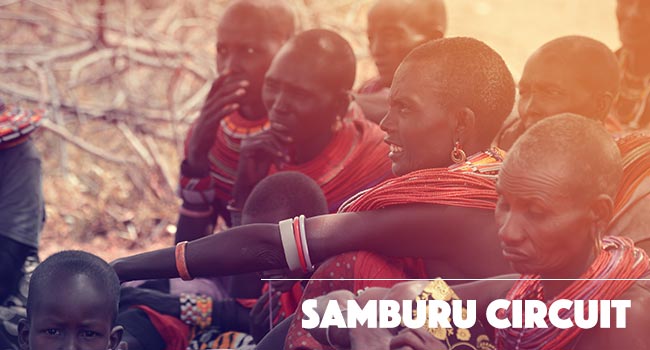Samburu Circuit

In June 2015 the EACLJ embarked on a project in Samburu County, which was aimed at educating the community members on their rights and responsibilities as provided in the Constitution.
The concentration of our civic education program was on; the prohibition of female genital mutilation (FGM), the provisions about sexual offences and also matters concerning children rights. This project was informed by the need to fight for the girl child and in extension all women in Samburu, who suffer grave violations of human rights, by being exposed to retrogressive traditional practices.
In January 2016, we went to cover the third part of the project. While we were in Samburu county, we were able to hold thirteen meetings in total, and these were all spread out in ten different places across the county.
On this trip we worked with Dr. Josephine Kulea, who is the Founder and Director of Samburu Girls Foundation (SGF), together with her team. She brought to our attention the need of information and empowerment of the women in Samburu county. Being a Samburu herself, she was able to communicate to the people better; especially in explaining the dangers of FGM and how it affects both the man and woman in a marriage. This she did in her mother tongue which is what majority of the locals understand. For presentations made by the EACLJ, we used Swahili to communicate and we were assigned a Samburu translator.
In all our meetings, we divided the sessions into four parts. Since SGF did the mobilization of the people, they would be first to conduct the introductions and explain what they do, and how exactly they help girls from Samburu community. Next we would give the participants an opportunity to introduce themselves and express their expectations. The EACLJ would be next with presentations the provisions of the law on matters FGM, children rights and sexual offences. Next would be a session for questions from the participants, then Dr. Kulea would be the last to make her presentation and capture the way forward.
The following list will give a brief of the places and meeting we held while in Samburu County:-
- Maralal town – We held a meeting for Heads of Departments. This included representatives from the Office of Director of Public Prosecutions, Interior Ministry, Prisons department; Kenya Police/Administration, Ministry of Health, the Judiciary, Probation office and we also got a representative from World Vision office.
- Nachola location – In this place we had a community meeting which was attended by both men and women, as well as the area chief, and a representative from the Teachers Service Commission.
- Tuum location – we had a community meeting which was attended by men only. These included both the young men; also referred to as morans, and the old members of this community.
We also got an opportunity to visit one of the local schools called Tuum Girls Secondary School. We met with the Principal Ms. Beatrice Muriithi who explained to us the reality of the education system in that area. She stated that her biggest challenge was the fact the locals do not support the idea of educating girls and hence they are not keen on sending them to school. While we were there, the school had only 24 girls. This was too low and risked closure of the school. However she was hopeful that she would get more girls during the form one intake.
The Principal organized for our team to have a session with the girls after their classes, so we could encourage them and also challenge them to work hard and change how girls are viewed in their community. - Wasorongai location – In this place we had two separate community meetings. We met with the men only on one side and women on a different side. The reason for this separation is mainly because women cannot express themselves where the men are, and in matters sexuality, the men may storm out of a meeting that has women in attendance.
- Illaut location – here we visited a school where we met with the head teacher and few others. We learnt the challenges that keep girls out of school in this particular area.
We also got an opportunity to speak to one of the area’s businessmen who was an elderly man with a wealth of history about Illaut location and Samburu as a whole. He explained the fact that girls are sometimes just pressured by their friends to undergo FGM. He gave the example of one of his daughters who insisted she wanted the ‘cut’ because of her friends in school. He said it is not easy to change that culture in a short while but was hopeful that with time the people would see the dangers of the retrogressive acts. - Anderi Sub-location – at this place we also conducted two separate community meetings. The men and women were separated for effective conversations.
- Sereolipi sub-location – this was a very small village where we got the opportunity to speak to both men and women. They were not separated since in this area Dr. Kulea did not go into details of explaining how the FGM is done and its effects using illustrations as used in the other meetings.
- Archers Post - this was a place at the boarder of Samburu and Isiolo counties. Here we met with the youth of the area. It is a more urban area than most of the places we had been before, therefore most of the attendants were students in high-school and colleges. It was important to speak to them to get the information to their local communities.
- Ngilae sub-location – in this area we had a community meeting which was attended by men only. They were both young and old. Although it was a remote area, it was interesting to note that the men older men were educated and few could understand English. The discussion here was quite interesting due to the fact that they knew the dangers of their culture and were keen to learn what the law said about it.
- Wamba constituency – This being an administrative town we were able to meet with the heads of different departments. We had representatives from the police department, the church, Ministry of health, Ministry of education, and also representatives from a local ladies’ group.
In all these regions we were able to learn the challenges they face and the biggest was the education of girls and of course the fact that they do not want to stop their culture.





